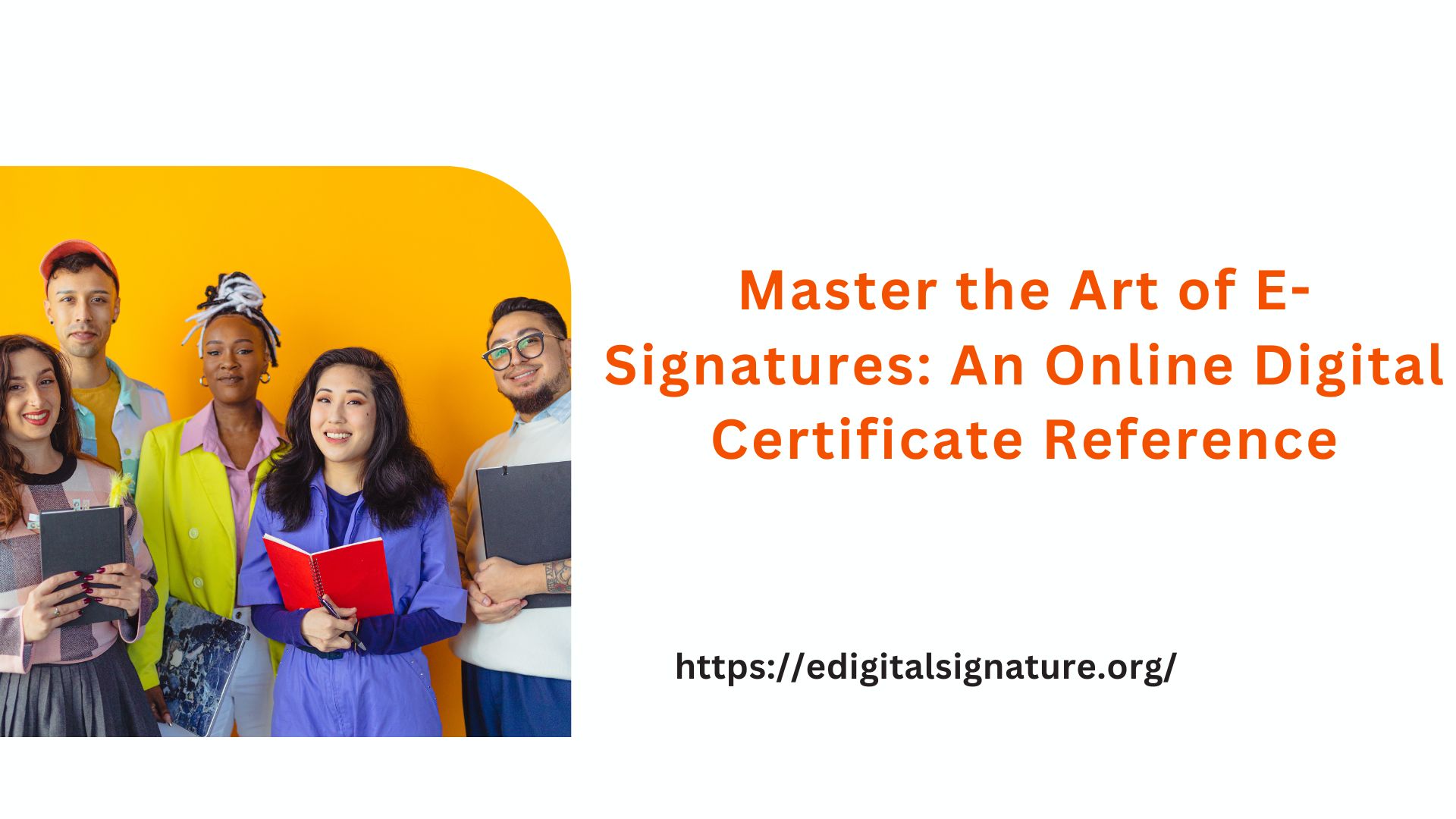
In the rapidly evolving digital landscape, traditional paperwork and ink signatures have taken a back seat as the world shifts towards online solutions for various processes. E-signatures, powered by online digital certificates, have emerged as the cutting-edge method for securing and authenticating electronic documents. This comprehensive guide aims to demystify the world of e-signatures and provide you with a solid understanding of their significance, implementation, legality, and best practices.
The Evolution of Signatures: From Ink to Pixels
The concept of signatures dates back centuries, serving as a mark of identity and consent. However, in our modern interconnected world, the need for speed, convenience, and security has given rise to electronic signatures. E-signatures provide a secure and legally recognized means of signing documents without the need for physical presence or printed documents.
Understanding E-Signatures and Digital Certificates
E-signatures are essentially electronic versions of handwritten signatures, used to authenticate the signer’s identity and confirm their consent. These signatures are powered by digital certificates, which act as virtual ID cards, verifying the authenticity of the signer and ensuring the integrity of the document. Digital certificates are issued by Certificate Authorities (CAs) and contain encryption keys that play a crucial role in securing the digital signature.
The Legal Landscape: E-Signatures and the Law
One of the primary concerns with e-signatures is their legal validity. Fortunately, numerous international and regional laws, such as the U.S. Electronic Signatures in Global and National Commerce Act (ESIGN) and the European Union’s eIDAS regulation, validate the use of e-signatures and provide them with the same legal status as traditional signatures. Understanding the legal framework in your jurisdiction is essential when implementing e-signatures.
Benefits of E-Signatures and Digital Certificates
Embracing e-signatures and digital certificates offers a plethora of benefits:
Efficiency and Convenience:
Say goodbye to the hassles of printing, signing, scanning, and sending physical documents. E-signatures streamline the process, saving time and effort.
Security and Fraud Prevention:
Digital certificates ensure the authenticity of the signer and document, reducing the risk of fraud and unauthorized alterations.
Cost Savings:
Eliminate expenses related to paper, ink, shipping, and storage. E-signatures are a cost-effective alternative.
Global Reach:
Collaborate with individuals and organizations around the world seamlessly, without being hindered by geographical barriers.
Environmental Impact:
By reducing paper usage, e-signatures contribute to a greener environment.
Implementing E-Signatures: Best Practices
To harness the power of e-signatures effectively, consider the following best practices:
Choose the Right Platform:
Opt for a reliable e-signature platform that complies with legal regulations and offers robust security features.
User Authentication:
Implement multi-factor authentication to ensure the identity of signers.
Document Integrity:
Utilize encryption and hashing techniques to maintain the integrity of the signed document.
Audit Trails:
Maintain detailed records of the signing process, including timestamps and IP addresses, for legal and accountability purposes.
Stay Informed:
Keep up to date with evolving e-signature laws and technologies to ensure compliance and security.
Challenges and Future Trends
While e-signatures offer numerous advantages, challenges such as technological barriers, resistance to change, and the potential for cyber threats still exist. As technology advances, the use of biometrics (such as fingerprint or facial recognition) for authentication is becoming more prevalent, enhancing the security of e-signatures.
Suggested Read: Online Digital Signature Certificate Guide
Conclusion
E-signatures, driven by digital certificates, have revolutionized the way we handle documentation and authentication. As the world becomes increasingly digital, mastering the art of e-signatures is essential for individuals and businesses alike. By understanding their significance, legality, implementation, and best practices, you can navigate the digital landscape confidently while enjoying the benefits of efficiency, security, and sustainability.

